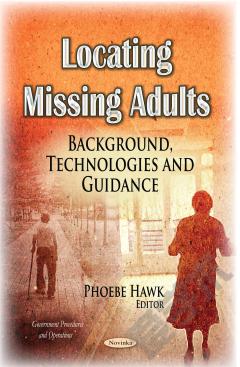Locating Missing Adults: Background, Technologies and Guidance
Adults may go missing due to choice, an abduction, foul play, a mental or physical disability, or a natural catastrophe, among other reasons. Although no accurate estimates exist of the number of missing adults, the Federal Bureau of Investigation (FBI) reported that as of January 1, 2014, slightly more than 50,000 cases of missing adults (age 18 and older) were pending in the National Crime Information Center (NCIC) system, a federal computerized index with data on crimes and locator files for missing and unidentified persons. Certain adults are particularly vulnerable to missing episodes; for example, those with dementia are at risk for becoming disoriented while engaged in a routine activity and may not be able to determine where they are or get to where they should be. Adults who engage in high-risk behaviors, including involvement in gang activity, may also be more prone to going missing. This book discusses demographics and record keeping of missing adults and unidentified remains, as well as some of the factors that may contribute to the disappearance of adults. This book also discusses federally-funded databases that are used to track data on missing adults and unidentified individuals. The book provides a report which describes the federal programs and initiatives to assist in locating missing adults, including funding data where applicable. Finally, it discusses issues about the federal role in missing adult cases.
{{comment.content}}








 京公网安备 11010802027623号
京公网安备 11010802027623号